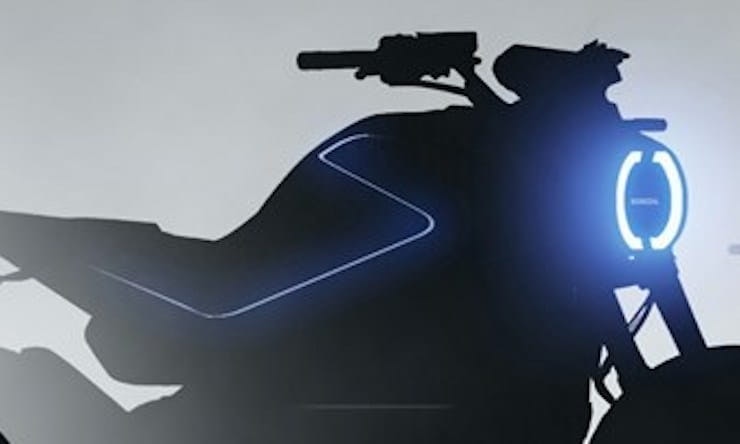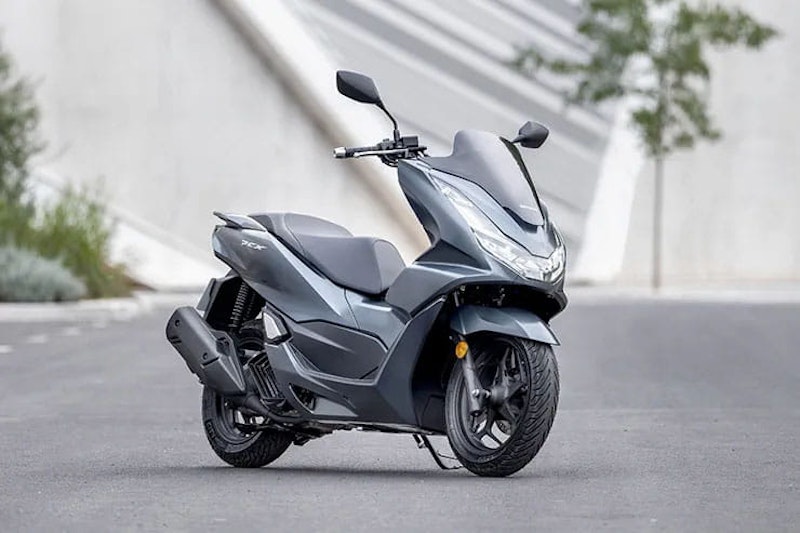It won’t have escaped your notice that the term ‘electric’ has become increasingly commonplace in the motorcycling lexicon as shifting philosophies over how to power our vehicles in a more eco-friendly and sustainable manner jumps from proposal to legislation.
Regardless of your view on whether electric power - though certainly kinder to the wallet in terms of running costs - can elicit the same emotive reactions to that of the rumbling fossil fuelled internal combustion engine, electric is coming and petrol is going over the next 10-15 years.
While the question of developing electric powertrains has become a no-brainer in the four-wheel car industry, motivation among their two-wheel counterparts has been considerably more sluggish despite the two factions being held to the same looming deadlines.
However, change is on the horizon as demonstrated by a handful of plucky start-ups - such as Super Soco, Damon, Energica and Zero - hitching their wagon to electric early in an attempt to wait it out until the market swings around to them, while a handful of high-profile manufacturers - such as Kawasaki, BMW and Harley-Davidson - have taken the plunge in an attempt to get a head start on the competition.
And yet, for all of the ambition and jingoism of the aforementioned brands, the take up, infrastructure implementation and - ultimately - the success of electric motorcycles regardless of the brand hinges on just one manufacturer; Honda.
It’s no exaggeration to say Honda commands a steer of the entire motorcycle industry on a global scale.
With annual sales of between 16-20 million, Honda stands head and shoulders above the competition with a market share of around 28%. In short, for almost every three motorcycles sold, one of them is going to be a Honda.
With this in mind, it is perhaps surprising and yet also understandable that the Japanese firm has maintained a low profile when it comes to questions of electric power.
Surprising in that the world’s largest motorcycle brand has come across as not having a clear plan on how it will manage the transition to electric power, yet understandable in that it takes on the responsibility of changing perceptions and driving support for a shift many of its loyal customer base remains reluctant towards.
However, it could only dodge the debate for so long, which is why this week Honda unveiled its road map towards an electric future with the declaration it will launch ten new EV PTWs (powered two wheelers) between now and 2025, reach carbon neutrality by 2050 and target seven figure sales within the next three years.
A drop in the ocean for Honda, a tidal wave for the industry
In terms of specific details, Honda wasn’t giving too much away when it came to these ten new models, though some shadowy rendered images and some telling silhouettes said more than the actual words being spoken.
In these images we can see Honda will - logically - focus its attention on the scooter market with as many as seven new models planned between now and 2025.
As a segment it dominates in multiple regions, this makes complete sense, but it is perhaps surprising it has taken until 2022 for Honda to rubber stamp its plans having seen its share of the market whittled down over the last couple of years by the rise in popularity for electric-founded rivals, particularly in China and other Asian nations.
Indeed, while you may not have heard of electric scooter firm Yadea on this side of the world, the firm has quickly cornered the lucrative Chinese scooter market. Shifting more than 6.1 million units in 2021 alone, Yadea has catapulted past Hero and Yamaha to sit second to Honda on the global manufacturer rankings.
As such, Honda will no longer rest on its laurels with seven of these ten new EVs being scooter-based - including what appears to be a maxi-scooter in the vein of the X-ADV - judging by the imagery, plus a child-size dirt bike.
It means there will be just two full-size electric Honda motorcycles coming initially, which the firm has designated under a vague sweeping ‘Fun EV’ banner.
We can only make a guess - albeit an educated one - as to what they will be, but a neo-retro CBxxxR roadster and low-slung Rebel cruiser looks to be on the money.
However, while these ‘Fun EV’ models will be charged primarily with boosting the image of Honda’s burgeoning electric range, the fact it is keeping its ambitions modest in the short-term says a lot about how the company is predicting trends in electric motorcycle demand.
With this in mind, though Kawasaki is on the verge of unleashing its first electric motorcycle in the coming weeks - and firms like Yamaha, KTM and BMW are seemingly not far behind - having just two full-size Honda EVs on the market among a vast range of CBs, CRFs, NTs and such doesn’t exactly scream full endorsement.
Even at a scooter level, Honda is playing it safe despite targets that, on paper, look ambitious.
Indeed, despite the rise of Yadea - plus similar opportunistic start ups like NIU and Super Soco - even an ‘unsuccessful’ Honda scooter still has the influence to swing an entire industry.
It’s why the company is setting eye-catching targets of 1 million EVs sold annually by 2027 and 3.5 million by 2030, which would represent a huge increase in volume of electric PTWs being sold… for the segment, at least anyway.
Indeed, while the notion of Honda contributing 3.5 million electric models to the world in the year 2030 alone sounds vast, it will still only account for 15% of Honda’s overall figures… just five years before numerous countries ban the sale of motorcycles with internal combustion engines.
Long live the ICE
It goes a long way to explaining why Honda, amid all of the EV fanfare, also used its announcement to make arguably the most significant declaration of all; the continued use, research and development of the internal combustion engine.
While we as incubated Europeans have been fed soundbites and headlines proclaiming that the days of the traditional ICE are numbered, in reality rumours of its death have been greatly exaggerated.
Indeed, Honda’s sales figures are borne from the brand’s ubiquitousness in all corners of the world, including numerous areas where there is no EV infrastructure and for whom electric motorcycles are seen as a (pricey) western frivolity.
As such, Honda - unlike Kawasaki, which is planning to be all-electric by 2035 - cannot afford to abandon the ICE just yet or risk alienating many of its most lucrative markets, such as those in Africa and Latin America.
It’s not a decision Honda will have taken lightly, either. On the four-wheel side of the business, Honda isn’t simply following electric-powered trends, it is leading them having electrified (or ‘hybrid-ised’) the majority of its car range and sunk £31bn into future development.
But on two wheels Honda is much less an innovator or pleasurable accessory as it is a tool, a lifeline or a necessity for others in less affluent regions.
It’s enough for Honda - willingly or otherwise - to circumnavigate the debate of protecting the environment by a more pressing need to protect people in communities where zeitgeist issues concerning climate change aren’t terribly high on an individual person’s priorities list.
Not that this serves to diminish Honda’s commitment to conserving the planet for future generations, more that its sheer size and influence transcends way beyond simply selling motorcycles and protecting its profit margins.
As such, while the move to electric has the power to completely revolutionise the motorcycle industry, even if Honda dominates the EV landscape in years to come in terms of numbers, as a business it can only afford an evolutionary strategy.

